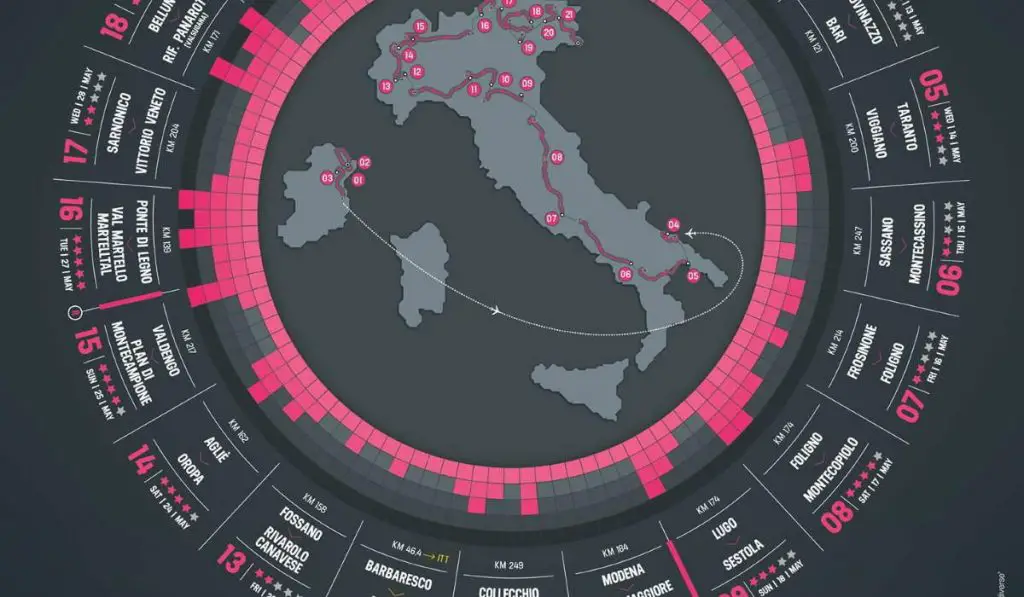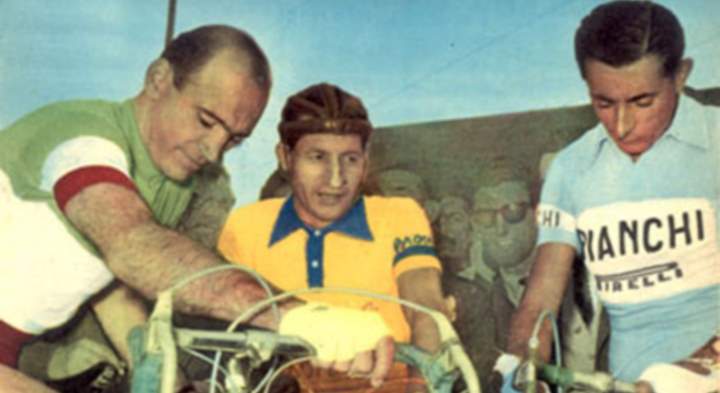The final stage of this year’s Italian Grand Tour, Giro d’Italia 2014 stage 21 is a 172 km flat stage from Gemona Del Friuli to Trieste.
Giro d’Italia 2014 stage 21 quick info
- DATE: Jun 01, 2014, Sunday
- STAGE TYPE: Flat
- START-FINISH: Gemona Del Friuli (215m) > Trieste (3m)
- LENGTH OF THE COURSE: 172.0 km
- DIFFICULTY:


Previous stage: Giro d’Italia 2014 Stage 20 details
Giro d’Italia 2014 stage 21 profile
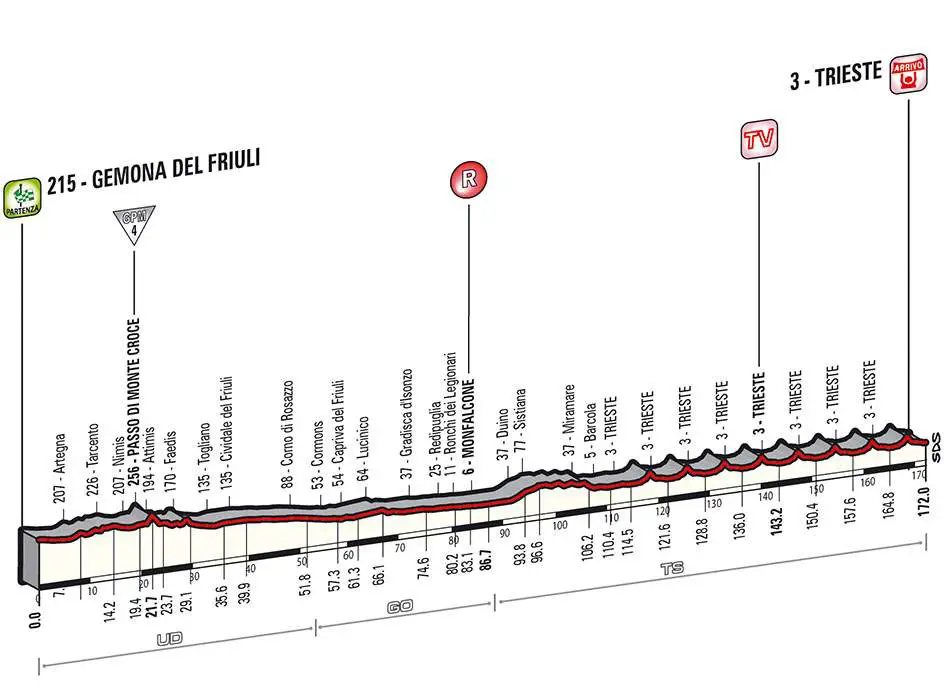
Last kilometers

Giro d’Italia 2014 stage 21 map

Giro d’Italia 2014 stage 21 start: Gemona del Friuli
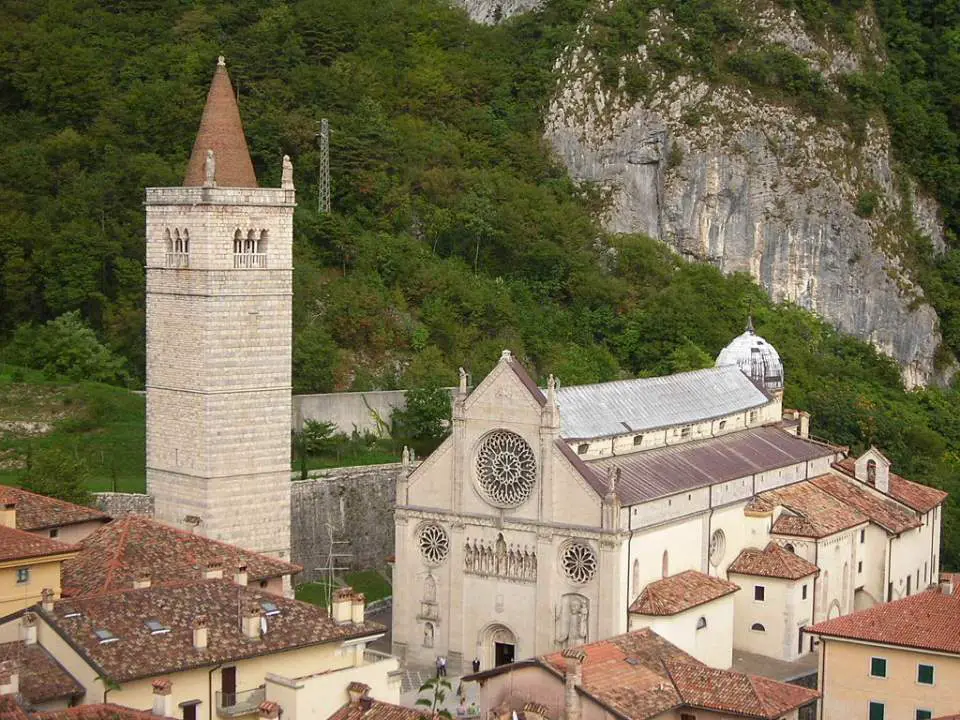
Gemona del Friuli is a comune (municipality) in the Province of Udine in the Italian region Friuli-Venezia Giulia, located about 90 kilometers (56 miles) northwest of Trieste and about 25 km (16 mi) northwest of Udine. Gemona’s main attraction is the medieval cathedral (Duomo), dating to the 14th century, with its massive campanile (freestanding bell tower) of the same period.
Monuments and places of interest
Although severely damaged by the 1976 Friuli earthquake, Gemona still preserves many famous monuments. Among these, the primacy undoubtedly belongs to the Cathedral, dedicated to Santa Maria Assunta.
- Duomo
- Bell tower: It stands next to the Cathedral, built between 1341 and 1369 by Nicolò and Domenico, sons of Giovanni Griglio, almost completely destroyed by the 1976 earthquake, and rebuilt on site.
- Museum of the parish church and treasure of the Cathedral. The oldest baptismal register in the world: Open to the public on October 28, 2006, the rich treasure of the Cathedral is preserved and exhibited on three floors and in ten rooms. The idea of establishing this museum was born in 1974, and it was decided to use the old rectory of Gemona, a building located in the historic Via Bini and dating back to 1360, as a museum. The works were practically completed when, at 4.00 pm on May 6, 1976, the chaplain of the Cathedral settled the bill with the painter. A few hours later, the earthquake: the rectory was seriously damaged and many of the works buried under the rubble, to be subsequently recovered and kept in safes and cabinets. The most important work exhibited in the Museum is the monstrance of the goldsmith Nicolò Lionello, of 1434. The 5 antiphonaries and 2 illuminated graduals, exhibited in a room dedicated to them, which were purchased in Padua in the first half of the fourteenth century, from the Paduan-Bolognese school, should also be mentioned. Finally, the museum houses the oldest baptismal register in the world from 1379 (the first baptism recorded is on March 3, 1379 ), an exceptional testimony to the history of the city.
- Church of the Beata Vergine delle Grazie
- Gemona historical archive
- Civica Biblioteca Glemonense “don Valentino Baldissera”
- Gemona Castle
- Church of San Cristoforo
- Church of Ognissanti
- Church of San Rocco
- Church of Sant’Agnese
- Church of Santa Lucia
- Church of Santa Maria degli Angeli
- Church of Santa Maria di Fossale (deconsecrated)
- Fort of Monte Ercole
- Ospedaletto lake
- Cocconi mill
- Civic Museum of Gemona
- Renato Raffaelli Museum at the Sant ‘Antonio Sanctuary
- Boton Palace
- Brollo Palace
- Elti Palace
- Gurisatti House
- Porta Udine
- Priory of Santo Spirito (Ospedaletto)
- Sanctuary of Sant’Antonio
- Visitor center on the earthquake (permanent photo exhibition and educational workshop)
Giro d’Italia 2014 stage 21 finish: Trieste
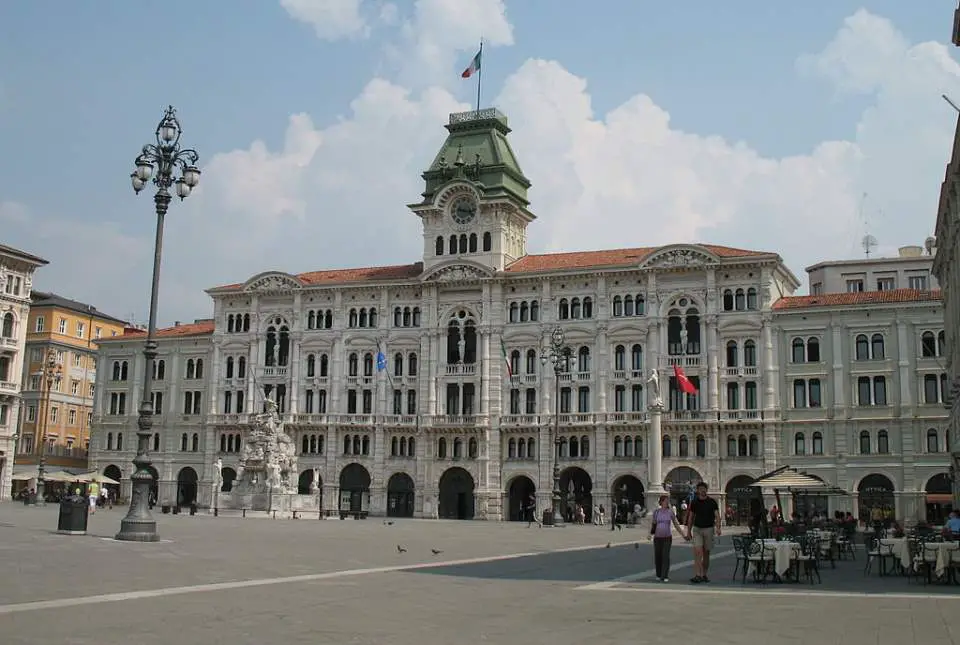
Trieste is a city and seaport in northeastern Italy. It is situated towards the end of a narrow strip of Italian territory lying between the Adriatic Sea and Slovenia, which lies almost immediately south and east of the city.
Trieste is located at the head of the Gulf of Trieste and throughout history, it has been influenced by its location at the crossroads of Latin, Slavic, and Germanic cultures.
In 2009, it had a population of about 205,000 and it is the capital of the autonomous region Friuli Venezia Giulia and Trieste province.
Trieste was one of the oldest parts of the Habsburg Monarchy. In the 19th century, it was one of the most important ports of the Great Powers of Europe. As a prosperous seaport in the Mediterranean region, Trieste became the fourth largest city of the Austro-Hungarian Empire (after Vienna, Budapest, and Prague).
In the fin-de-siecle period, it emerged as an important hub for literature and music. It underwent an economic revival during the 1930s, and Trieste was an important spot in the struggle between the Eastern and Western blocs after the Second World War. Today, the city is in one of the richest regions of Italy and has been a great center for shipping, through its port (Port of Trieste), shipbuilding, and financial services.
In 2012 Lonely Planet.com listed the city of Trieste as the world’s most underrated travel destination.

On June 30, 1946, less than a year after the end of World War II, during the 12th stage of the Giro from Rovigo to Trieste, some anti-Italian activists who wanted Trieste to be part of newly-formed Yugoslavia stopped the Giro 2km east of the village of Pieris, nearly 40km before the finish line.
The activists blocked the road with cement blocks and threw stones and nails at the riders. The Giro organization had already decided to declare the stage end in Pieris and neutralized the general classification for the day, but some of the riders, led by the Trieste-born Giordano Cottur, insisted on riding to Trieste anyway.
This was the first Giro and the first Grand Tour that both Italian legends Fausto Coppi and Gino Bartali were opponents on separate teams. Bartali was the overall victor.
Sources
- Giro d’Italia official website
- Trieste on Wikipedia
- Top 18 fastest Paris-Roubaix editions - April 7, 2024
- Col de Tourmalet [Amazing photo from the 1953 Tour de France] - January 11, 2024
- Bernard Hinault and Francesco Moser, 1981 Paris-Roubaix - December 8, 2023

